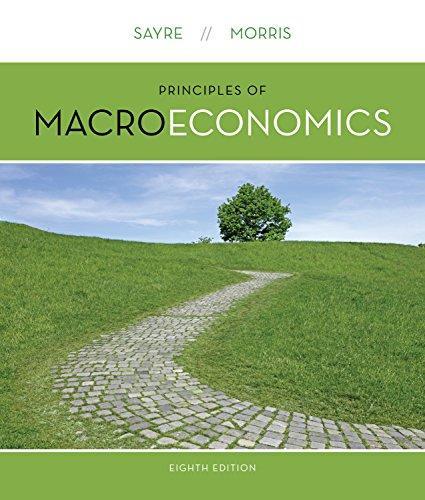(LO 6) Table 1.21 contains the production possibilities data for capital goods and consumer goods in the...
Question:
(LO 6) Table 1.21 contains the production possibilities data for capital goods and consumer goods in the economy of New Harmony.
Please see the Answer Key (on Connect) for the solution to the Comprehensive Problem. An alternative version of the Comprehensive Problem is available to instructors on Connect.
A B C D E Capital goods 0 8 14 18 20 Consumer goods 30 27 21 12 0 TABLE 1.21
a) Use the grid in Figure 1.14 to draw the production possibilities curve for New Harmony, and label it PP1.
Label each of the five output combinations with the letters a through e.
b) Assume that the people of New Harmony have decided to produce 12 units of consumer goods How many units of capital goods could be produced?
c) Assume that the people of New Harmony have decided to produce 11 units of capital goods.
Approximately how many units of consumer goods could be produced?
Answer:
d) What is the total cost of the first 14 capital goods produced?
Answer:
e) Assuming the economy is producing combination C, what is the total cost of 6 additional consumer goods?
Answer:
f) Assuming the economy is producing combination B, what is the approximate per-unit cost of an additional capital good?
Answer:
g) Assuming the economy is producing combination C, what is the approximate per-unit cost of an additional capital good?
Answer:
h) What law is illustrated in your answers to
(f) and (g)?
i) Fill in Table 1.22 assuming that, 10 years later, the output potential of capital goods has increased by 50 percent while the output potential for consumer goods has risen by 6 units for each combination A through D in Table 1.22.
j) Using the data from this table, draw PP2 on Figure 1.14.
k) As a result of the economic growth, can New Harmony now produce 24 capital goods and 26 consumer goods?
Answer:
l) What are three possible reasons that would explain the shift from PP1 to PP2?
Step by Step Answer:







